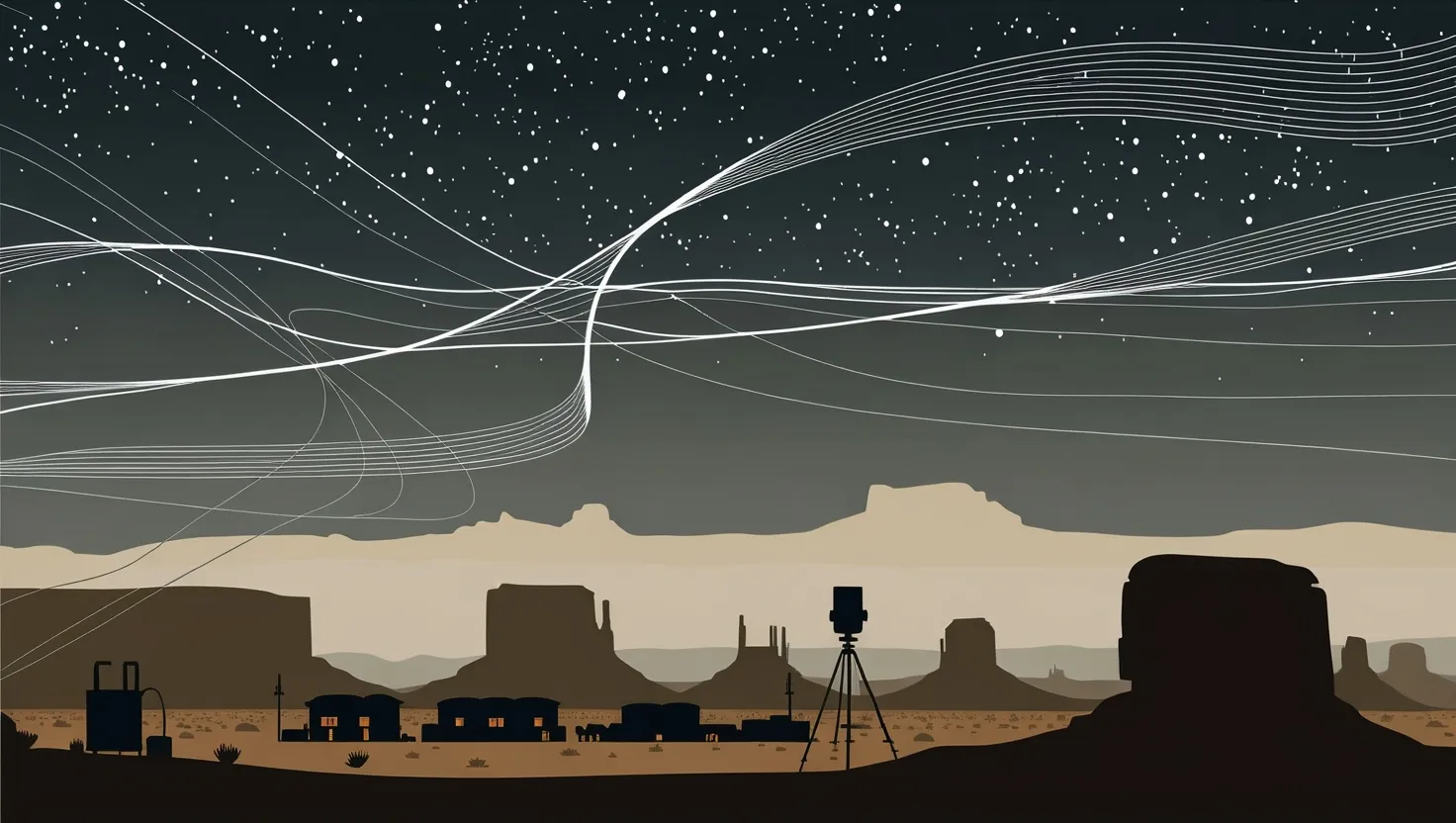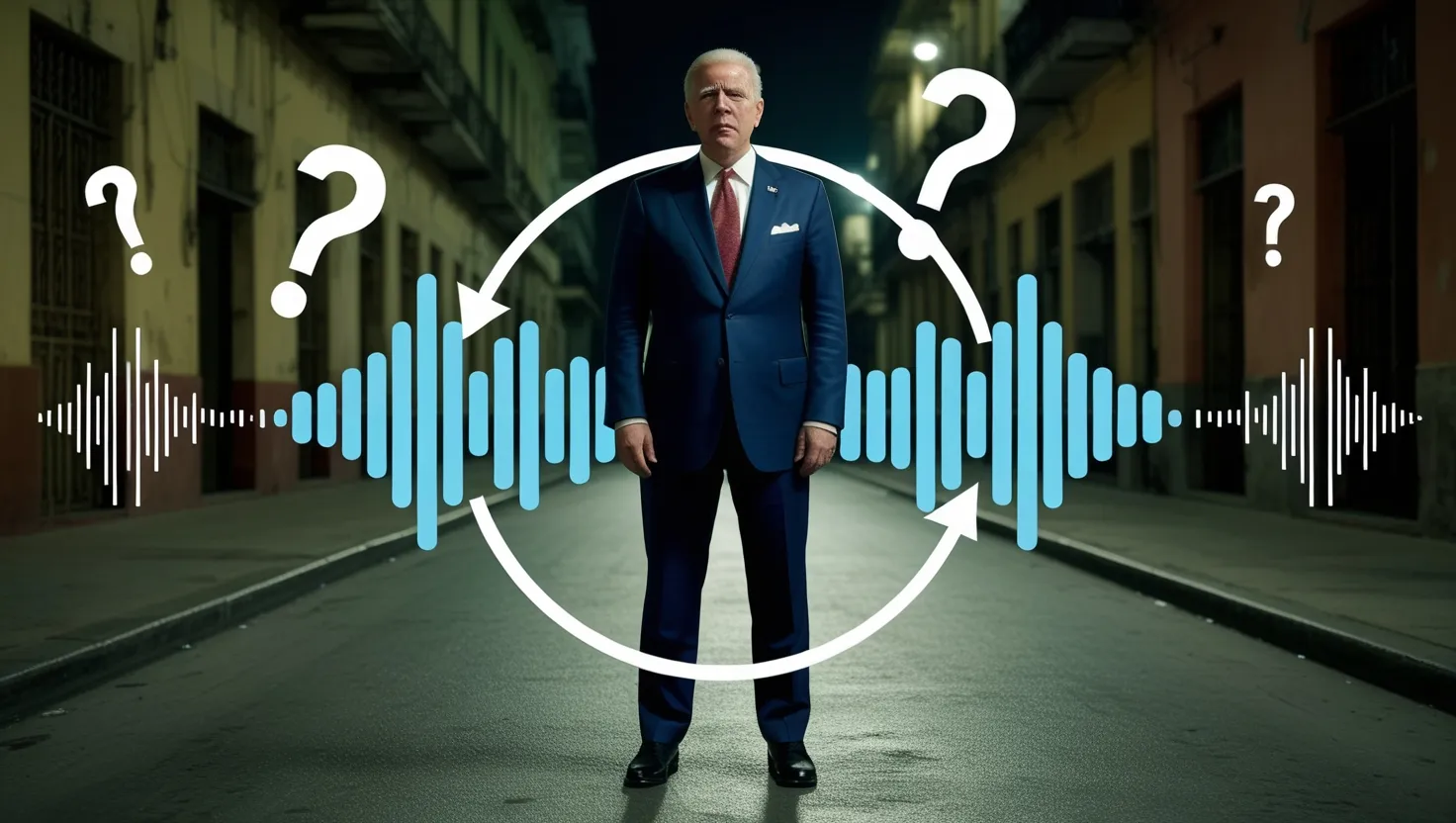I’ve spent years following strange stories, but few have stuck with me like the Taos Hum. What started as scattered complaints from a few residents in a small New Mexico town has grown into something far more complicated than anyone expected. When you first hear about it, your instinct might be to dismiss it as mass hysteria or overactive imaginations. But when you dig deeper, the facts become harder to ignore.
The phenomenon emerged publicly in the early 1990s when residents of Taos began reporting a persistent low-frequency sound that defied explanation. They described it in strikingly similar ways: a distant diesel engine running continuously, an electrical buzzing that never stopped, or sometimes just a vibration they felt more than heard. What made this particularly strange was that only about 2% of the population could perceive it. Recording equipment captured nothing unusual. Microphones remained silent while people stood in the same room describing an unbearable noise.
“The most beautiful experience we can have is the mysterious. It is the fundamental emotion that stands at the cradle of true art and true science.” These words from Einstein take on new meaning when you consider how this phenomenon has divided communities and baffled researchers for decades.
The health complaints were real and documented. People reported chronic headaches, sleep disturbances that lasted for months, heightened anxiety, dizziness, and nausea. Some residents became so desperate they moved away from Taos entirely, only to find relief elsewhere. This wasn’t imagined suffering. Medical examinations showed physiological stress responses, elevated cortisol levels, and altered brainwave patterns in those claiming to hear the hum. Their bodies were reacting to something, even if instruments couldn’t measure it.
In 1993, scientists from Los Alamos National Laboratory and the University of New Mexico arrived with sophisticated equipment designed to detect sounds across an enormous frequency range. They set up monitoring stations throughout the town, interviewed dozens of affected residents, and analyzed the data for months. The conclusion? Nothing definitive. No single source could be identified. No unusual sound levels were detected that would explain the widespread reports.
But here’s where things get interesting. Why would a team from Los Alamos National Laboratory, one of the premier nuclear research facilities in the world, dedicate resources to investigating a small-town noise complaint? This wasn’t their typical work. The lab had been involved in weapons development, nuclear testing, and classified projects since World War II. Their presence alone suggested that someone in the government took this seriously.
Have you ever wondered why certain military installations seem to attract these unexplained phenomena? The Southwest United States is dotted with secret facilities, testing ranges, and classified research centers. Kirtland Air Force Base sits less than 130 miles from Taos. White Sands Missile Range isn’t much farther. The region has been ground zero for experimental technology since the Manhattan Project.
“In science, there are no shortcuts to truth.” Yet when it comes to military research, shortcuts around public knowledge happen constantly. Declassified documents from the Cold War era reveal extensive research into acoustic weapons. The military explored infrasound—frequencies below human hearing—as tools for psychological operations and crowd control. These weapons could theoretically cause disorientation, nausea, and anxiety without leaving physical evidence. The effects would be invisible, deniable, and difficult to trace.
Infrasound occurs naturally in earthquakes, volcanic eruptions, and severe weather. Humans typically can’t hear frequencies below 20 Hz, but they can feel them. Studies have shown that exposure to infrasound can cause feelings of unease, pressure in the chest, and even visual hallucinations. Some researchers proposed that geological activity beneath Taos might generate these frequencies. The Rio Grande Rift runs through the region, creating ongoing seismic activity. Minor earthquakes and ground vibrations could theoretically produce low-frequency sounds.
But this geological explanation struggles with several problems. Why would only certain people perceive it? Why hasn’t it been detected by sensitive instruments? And why does the phenomenon seem concentrated in specific locations rather than spread across the entire rift zone? Natural explanations feel incomplete when you consider the pattern of reports.
The timeline raises additional questions. Reports of the hum intensified during the 1990s, coinciding with increased military technology development following the Cold War. Witness accounts mention unusual aircraft activity during periods when the hum seemed most intense. Some residents reported seeing unmarked helicopters and strange lights in the sky on nights when the sound was unbearable.
Indigenous peoples of the region have their own interpretations. Pueblo traditions speak of earth energies and sounds that carry messages or warnings. These oral histories predate modern technology by centuries. What if something natural has always existed in this region, and modern equipment has found ways to amplify or manipulate it? This possibility sits uncomfortably between ancient wisdom and contemporary military capability.
“The truth is rarely pure and never simple.” Oscar Wilde’s observation applies perfectly here. Research into the Taos Hum reveals contradictions at every turn. Scientists found that different “hummers” were actually describing different sounds. Some heard continuous tones. Others experienced intermittent pulses. A few felt only vibrations with no auditory component at all. This variation suggests multiple sources or different mechanisms of perception.
Consider the physiology involved. The human ear contains specialized cells that respond to different frequencies. Some individuals possess heightened sensitivity to certain ranges of sound. Research has identified people who can detect extremely low frequencies that others miss entirely. Could the hum be a real phenomenon that only affects those with specific biological characteristics? This would explain the selective nature of the reports while validating the experiences of those affected.
But it doesn’t explain everything. Why Taos specifically? Similar phenomena have been reported worldwide—the Bristol Hum in England, the Windsor Hum in Canada, the Kokomo Hum in Indiana. Each location shares certain characteristics: proximity to military installations or heavy industry, geographic features that might trap or amplify sound waves, and small but consistent populations of affected residents. The pattern suggests something systematic rather than random.
The ethical dimensions of this mystery deserve attention. If government agencies or private contractors were testing acoustic technology on unwitting populations, it would represent a serious violation of civil rights. Historical precedents exist. Declassified records show that military and intelligence agencies conducted secret experiments on American citizens during the Cold War, including radiation exposure studies and drug trials. The idea that similar testing might continue today isn’t paranoid speculation—it’s informed by documented history.
What would acoustic weapon testing look like? Probably exactly like the Taos Hum. A low-frequency sound affecting a small percentage of the population, causing measurable physical symptoms but leaving no traceable evidence. The perfect test would target a small, isolated community where reports could be monitored and effects documented without attracting widespread attention. Taos fits this profile precisely.
“We can easily forgive a child who is afraid of the dark; the real tragedy of life is when men are afraid of the light.” Plato’s words remind us that fear of truth often exceeds fear of the unknown. The Taos Hum investigation ended inconclusively, not because answers were impossible but perhaps because certain answers were inconvenient.
The phenomenon has become part of Taos’s identity, inspiring art, music, and endless speculation. Local businesses reference it. Tour guides mention it to curious visitors. This normalization might be the strangest aspect of all—how quickly we adapt to mysteries rather than demanding resolution. The hum has transformed from urgent crisis to quirky local legend, defusing pressure for serious investigation.
Yet the suffering continues for those affected. They’re often dismissed as eccentric or oversensitive, their complaints treated as psychological rather than environmental. This marginalization serves those who might prefer the phenomenon remain unexplained. If you can’t find the source, you can’t assign responsibility. If you can’t prove harm, you can’t demand accountability.
Modern technology offers new investigative possibilities. Distributed sensor networks, advanced signal processing, and machine learning could potentially detect patterns that earlier equipment missed. Citizen science projects have successfully tackled other environmental mysteries. Why hasn’t the Taos Hum received similar attention? Perhaps because the answers might prove more disturbing than the questions.
The phenomenon challenges comfortable assumptions about transparency and safety. We expect our government to protect us from threats, but what happens when the government itself might be the source? We trust that unusual phenomena have natural explanations, but what if some have human architects working in secret?
I think about the residents who left Taos seeking peace, only to wonder forever what they were really hearing. I think about the scientists whose inconclusive findings became bureaucratic dead ends. I think about the questions that remain deliberately unanswered. The Taos Hum exists in the space between what we’re told and what we suspect, between natural mystery and manufactured ambiguity.
Whether the sound originates from geological forces, industrial equipment, or experimental technology matters less than what it reveals about the limits of public knowledge and the persistence of official secrecy. The hum continues, faint and elusive, heard by some and missed by others—a reminder that not everything operating around us makes itself known, and not everyone with answers feels obligated to share them.






